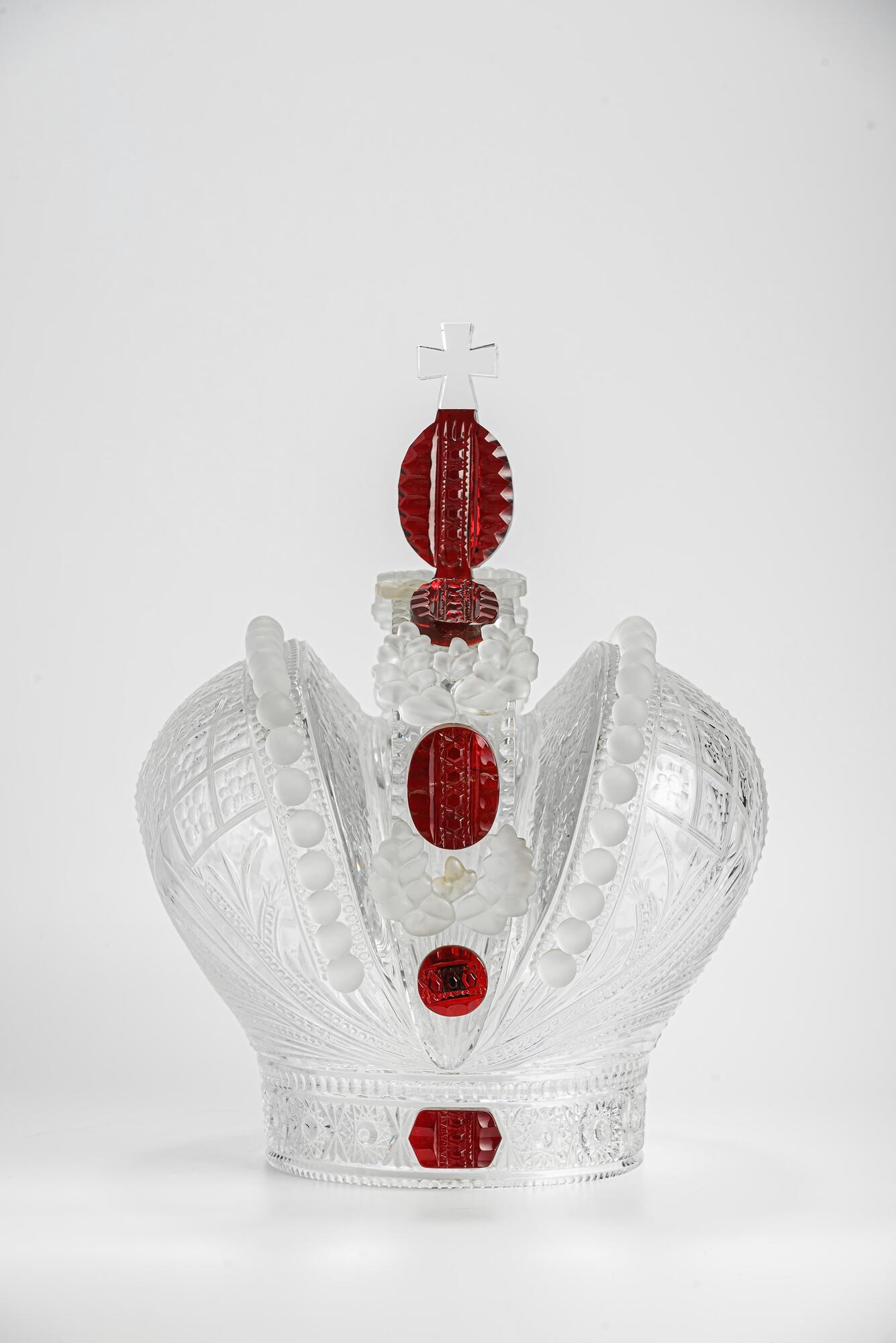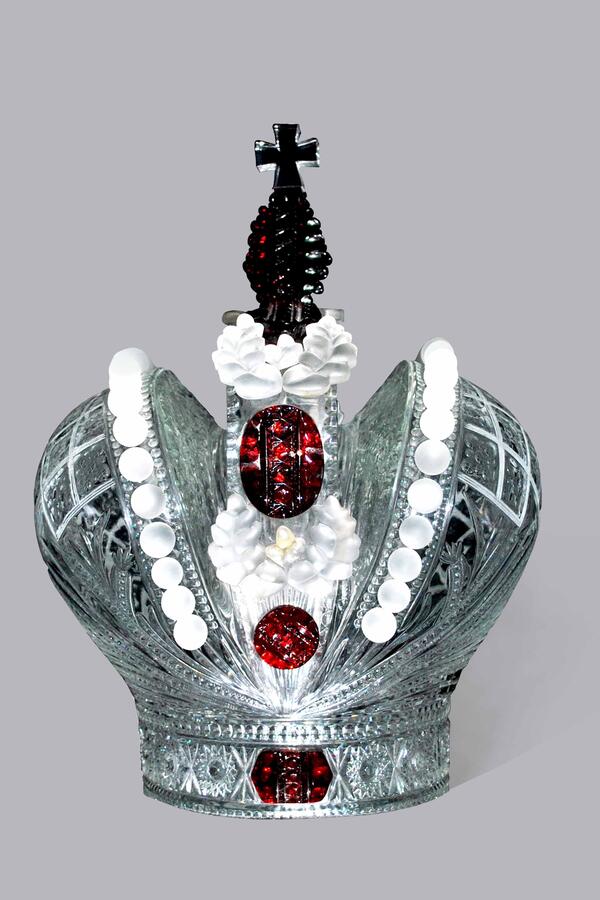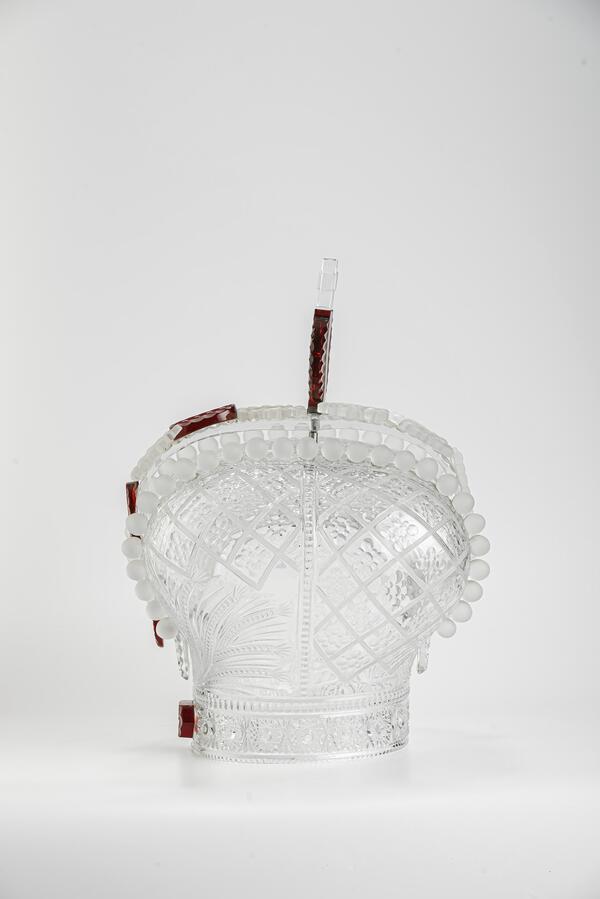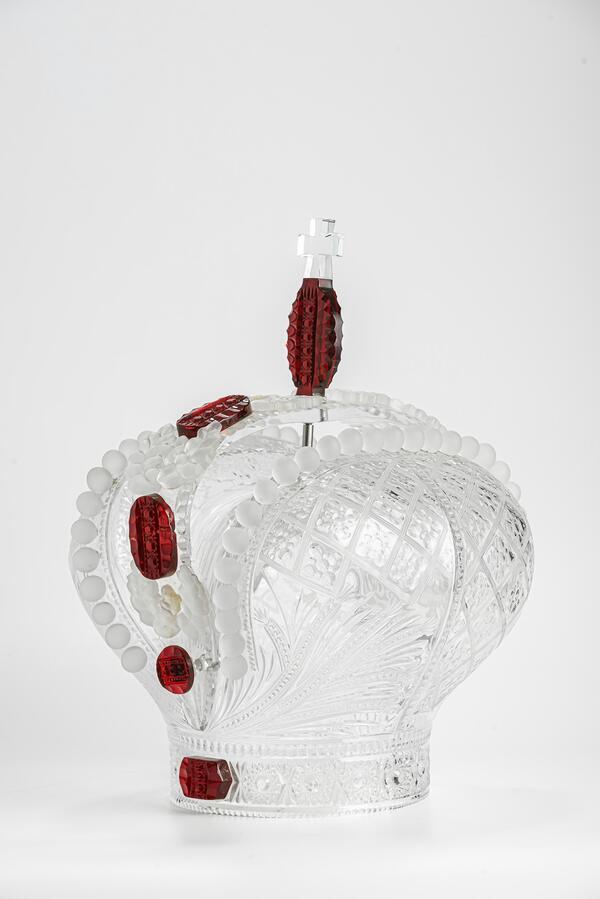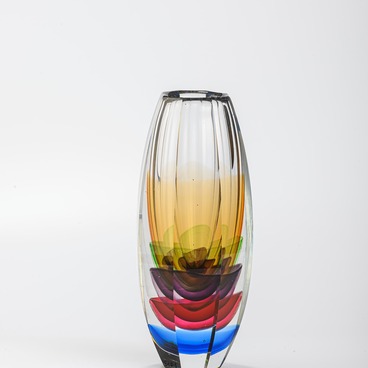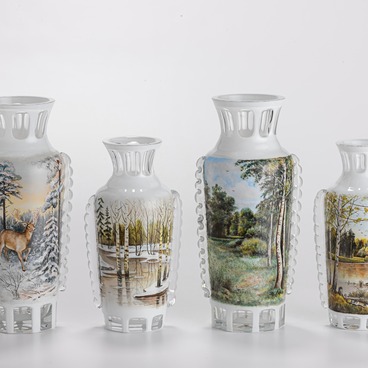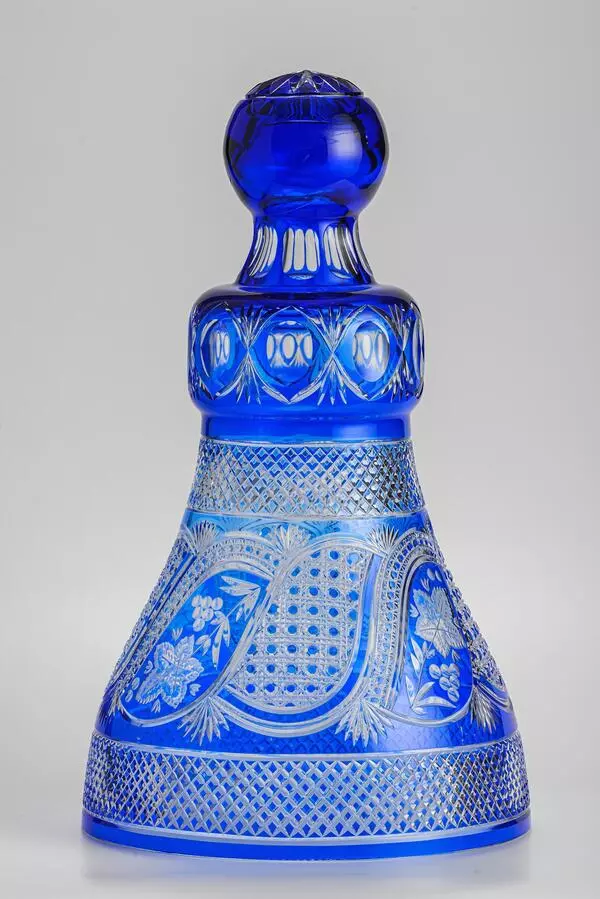This decorative crown was made in the experimental art workshop of the Red Giant glass factory. The item was commissioned by the factory and proved successful at the 2000 exhibition.
The design was produced by the chief artist of the factory Viktor Vasilievich Ezhov. The work was carried out by a team of the best craftsmen: Alexey Ivanovich Koyakov, Igor Evgenievich Svinkin, Sergey Nikolaevich Ezhov, Nikolay Grigorievich Krasheninnikov, and Lyudmila Viktorovna Ezhova.
The artist’s idea was to make a glass copy of the Great Imperial Crown of the Russian Empire. The work began with the preparation of detailed drawings and sketches based on the famous exhibit.
The diamond crown was created in 1762 by court jewelers led by Georg Eckart and Jérémie Pauzié who specialized in diamonds. It was used for the coronation of Catherine II and all subsequent monarchs of the Russian Empire.
Each element of the crown had a special meaning. The two hemispheres symbolize the unity of the West and the East; laurel branches stand for glory and power, while oak leaves and acorns signify the permanence of the monarchy. The influence of Classicism and Baroque can be traced in bright and massive decorations that are combined with concise and restrained shapes, and the emphasis on the natural beauty of precious stones. To create the regalia, silver, gold, red velvet, diamonds and a rare gem (a large red spinel) were used.
The factory artisans managed to render all the variety of precious materials and repeat the subtlety of execution in glass and crystal.
A complex structure is assembled from parts glued and fastened together. Two hemispheres rise above the cylindrical base. The arch between them is put on a metal rod. An oval ruby crystal with a colorless cross on the top imitates the spinel. The gold and silver “embroidery” in the form of stylized flowers inside the rhombuses is intricately cut and polished. The pearls are two rows of frosted balls. Between the frosted crystal oak leaves there is one round and two oval ruby inlays. A hexagonal plate is attached to the base of the crown.
Two decorative crowns were made at the Red Giant factory. One of them is housed in the museum; the second was purchased by a private collector.
The design was produced by the chief artist of the factory Viktor Vasilievich Ezhov. The work was carried out by a team of the best craftsmen: Alexey Ivanovich Koyakov, Igor Evgenievich Svinkin, Sergey Nikolaevich Ezhov, Nikolay Grigorievich Krasheninnikov, and Lyudmila Viktorovna Ezhova.
The artist’s idea was to make a glass copy of the Great Imperial Crown of the Russian Empire. The work began with the preparation of detailed drawings and sketches based on the famous exhibit.
The diamond crown was created in 1762 by court jewelers led by Georg Eckart and Jérémie Pauzié who specialized in diamonds. It was used for the coronation of Catherine II and all subsequent monarchs of the Russian Empire.
Each element of the crown had a special meaning. The two hemispheres symbolize the unity of the West and the East; laurel branches stand for glory and power, while oak leaves and acorns signify the permanence of the monarchy. The influence of Classicism and Baroque can be traced in bright and massive decorations that are combined with concise and restrained shapes, and the emphasis on the natural beauty of precious stones. To create the regalia, silver, gold, red velvet, diamonds and a rare gem (a large red spinel) were used.
The factory artisans managed to render all the variety of precious materials and repeat the subtlety of execution in glass and crystal.
A complex structure is assembled from parts glued and fastened together. Two hemispheres rise above the cylindrical base. The arch between them is put on a metal rod. An oval ruby crystal with a colorless cross on the top imitates the spinel. The gold and silver “embroidery” in the form of stylized flowers inside the rhombuses is intricately cut and polished. The pearls are two rows of frosted balls. Between the frosted crystal oak leaves there is one round and two oval ruby inlays. A hexagonal plate is attached to the base of the crown.
Two decorative crowns were made at the Red Giant factory. One of them is housed in the museum; the second was purchased by a private collector.
